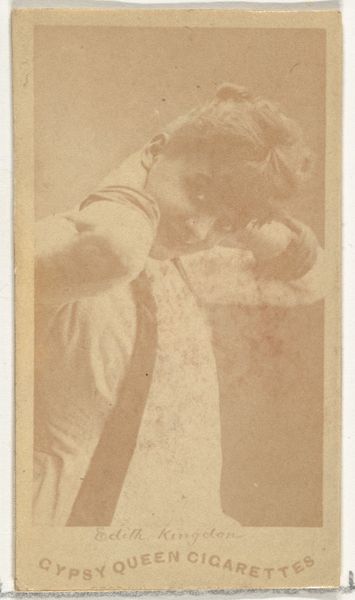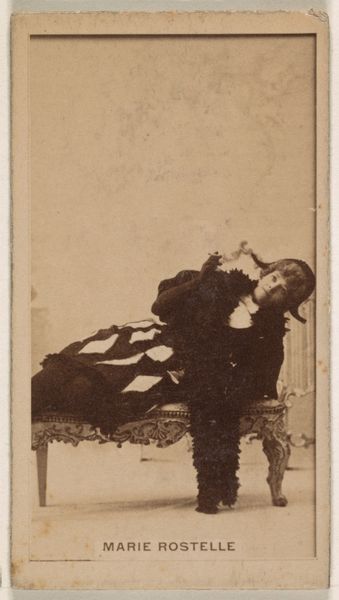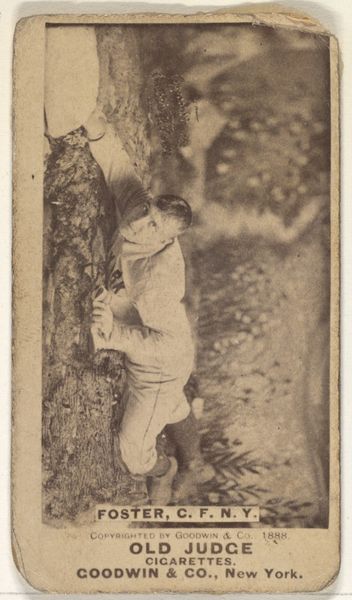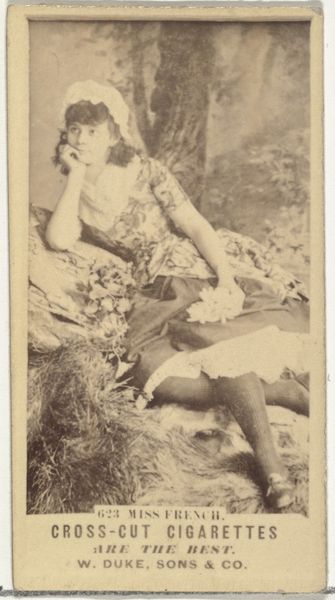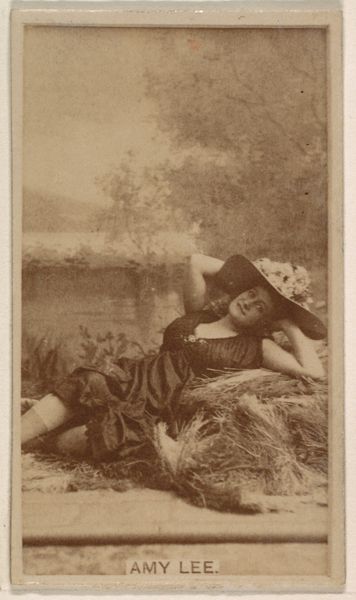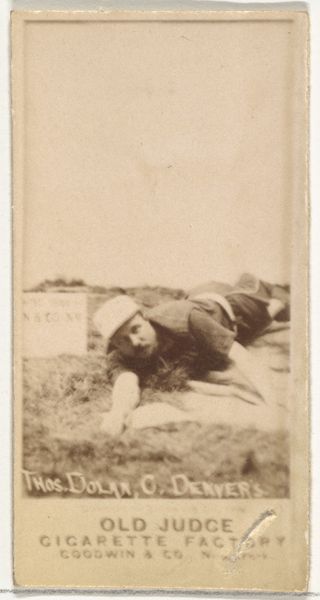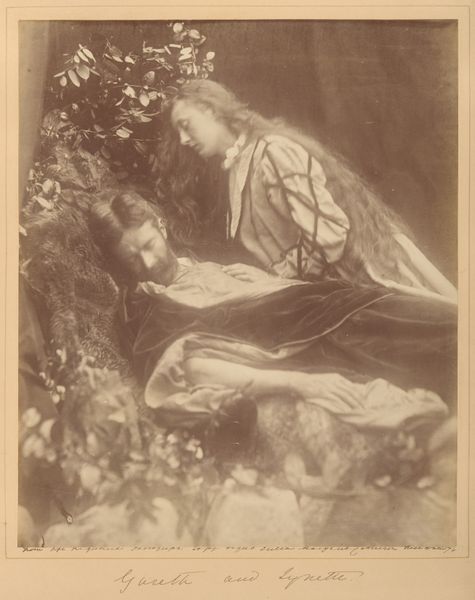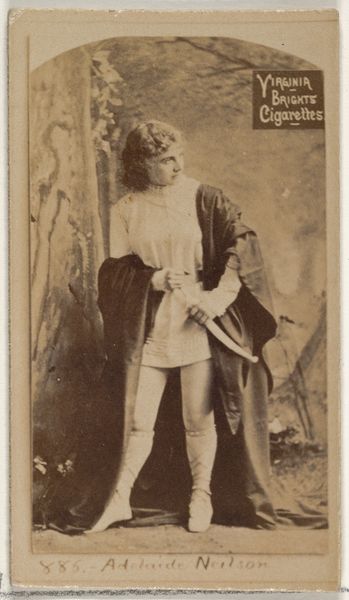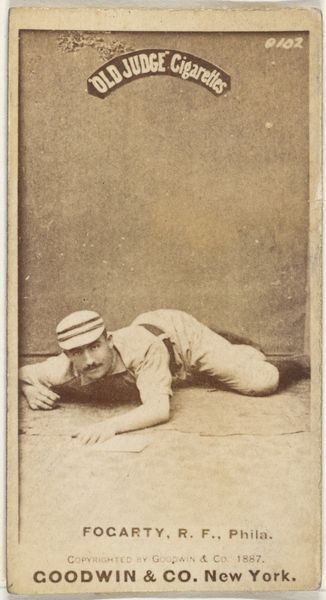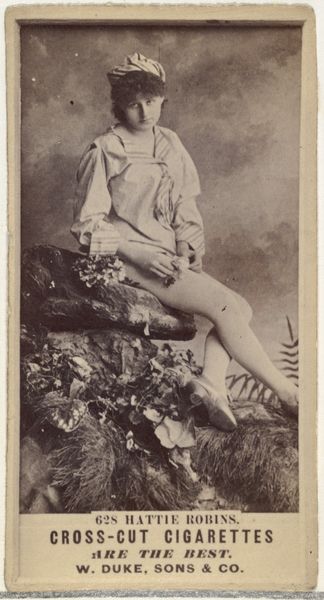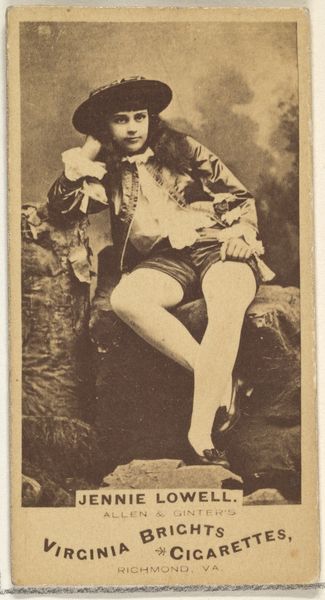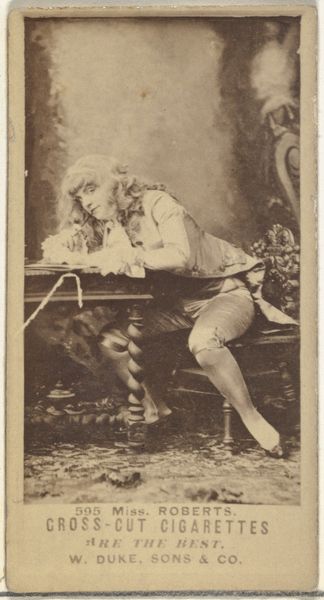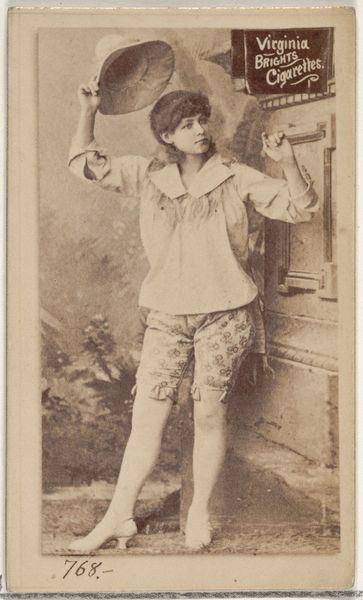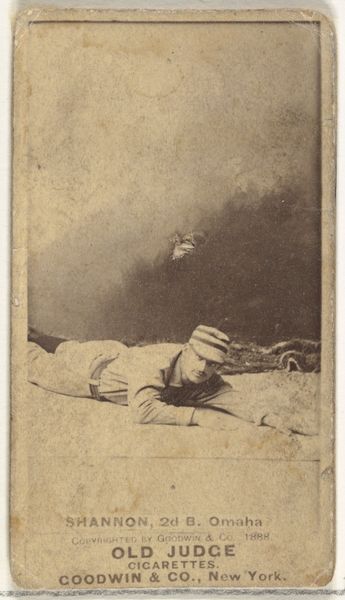
Charles Hay Cameron, Esq., in His Garden at Freshwater 1865 - 1867
0:00
0:00
Dimensions: 33.4 x 26.7 cm (13 1/8 x 10 1/2 in. )
Copyright: Public Domain
Curator: Looking at this image, I'm struck by the almost dreamlike quality it possesses. A bit sepia-toned, soft edges. It feels… timeless. Editor: Indeed. We're looking at a gelatin silver print by Julia Margaret Cameron, taken between 1865 and 1867. The piece is entitled "Charles Hay Cameron, Esq., in His Garden at Freshwater". Beyond being an incredible artist, Cameron documented key intellectual and artistic figures. Her images tell us about the social networks and intellectual milieu of her time. Curator: So, it's a portrait of sorts, captured en plein air it seems, a real person placed in nature. I see a man, probably in his later years with that wonderfully flowing beard, seated beneath lush foliage, looking contemplatively towards some unknown prospect. The details, they are quite obscured but not entirely. Like a faded memory. Editor: That's exactly the quality Cameron embraced! She deliberately used a soft focus to achieve a more painterly effect. Remember, photography was still relatively new then, still working to define its artistic purpose separate from mere documentation. There’s a deliberate rejection of strict realism happening here. It pushes photography into the realm of art with emotion at its center. Curator: The soft focus lends itself well to romanticism, there is an almost melancholic air about it. It feels very of its time in that respect. And considering its a gelatin silver print…that aged effect adds to that old-world aesthetic. He appears both relaxed, reclined actually, and like a sage who knows secrets of the world. Editor: I’d suggest thinking about how the composition places Cameron's subject very deliberately within a cultivated space. The backdrop is intentionally selected; a garden, which signifies cultivation and taste. It projects Charles as not just an individual, but someone with access to land, education, and refined tastes. And that feeds into how these images were used in society. Photographic portraits cemented social standing. They moved through families, reinforced status, shaped public image and collective memory. Curator: That context provides more dimension than my impressionist interpretation had to offer. Editor: That’s the fascinating thing about art, isn’t it? How both the emotion and the history inform our present-day understanding. Curator: It is indeed. To think an image could contain so much intention and information while still resonating on such a personal level. Editor: Absolutely. These images are cultural objects, laden with meaning. They hold social currency and continue to spark new ways of thinking, a conversation over time and across space.
Comments
No comments
Be the first to comment and join the conversation on the ultimate creative platform.
